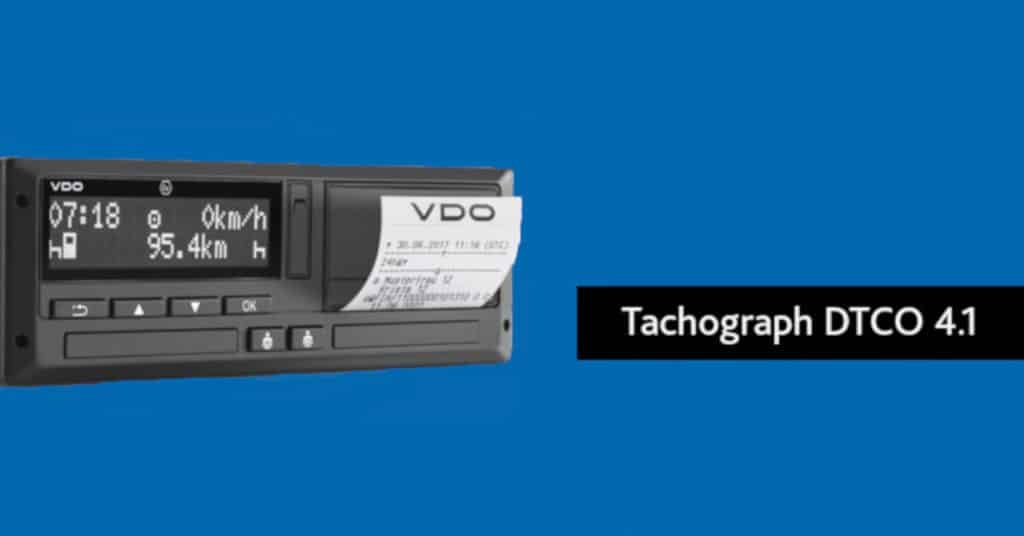
The mobility package I is intended to ensure more balanced competition in the EU’s internal market. An important role in this plays the new tachograph. The digital Tachograph DTCO 4.1 (SmartTacho G2V2) is mandatory in all new vehicles with a total weight of more than 3.5 t since August 21, 2023.
However, there are even more important dates surrounding the introduction of DTCO 4.1:
- Step – August 2023
All newly registered vehicles with a permissible total weight of more than 3.5 t must be equipped with the DTCO 4.1 upon delivery. - Step – end of 2024
For all vehicles used in cross-border traffic with a permissible total weight of more than 3.5 t, the “old” tachographs (analog and digital tachographs) must be replaced by the new DTCO 4.1. - Step – August 2025
All vehicles that are used in cross-border traffic with a permissible total weight of more than 3.5 t and that are equipped with the DTCO 4.0 tachograph (first generation intelligent tachograph) must be retrofitted with the DTCO 4.1. - Step – July 2026
All commercial vehicles with a permissible total weight of 2.5 to 3.5 t that are used in cross-border traffic must be equipped with DTCO 4.1.
It is important to differentiate between national and international transport. If you have a look at the EU regulations more closely, only vehicles that drive internationally will initially be affected. Conversely, this means that all vehicles traveling nationally are not affected by the conversion requirement for the time being.
But should you really wait with the conversion until it becomes mandatory in national transport (e.g. due to the upcoming revision of the Driving Personnel Ordinance in 2024)? One thing is certain: if you convert to the new DTCO 4.1 in a timely manner, you can avoid possible downtimes to a later date.
What’s new with DTCO 4.1?
The GNSS module automatically detects border crossings and saves them in the mass storage. This makes it much easier and better to document cabotage trips and driver postings.
The so-called ITS interface (Intelligent Transportation Systems), already known from 4.0, has been expanded again and enables many more functions. More than 70 different data sets can currently be sent to a fleet management system. The driver can decide in advance whether to pass on his data or not.
A Bluetooth interface was integrated to enable the tachograph to be read out and controlled via external devices. The 4.1 can also process the new driver cards (with an expansion of the storage capacity from 28 to 56 days), which will be mandatory from the end of 2024, today.
When international traffic returns, the new tachograph also supports the extended driving time exception and the two shortened weekly rest periods in a row. The ability to make loading and unloading settings in the new menu also makes it easier to manage specific cabotage tasks.
These new functions create additional security. Because reliable data delivery can make controls in international freight transport much more effective and more simple.



